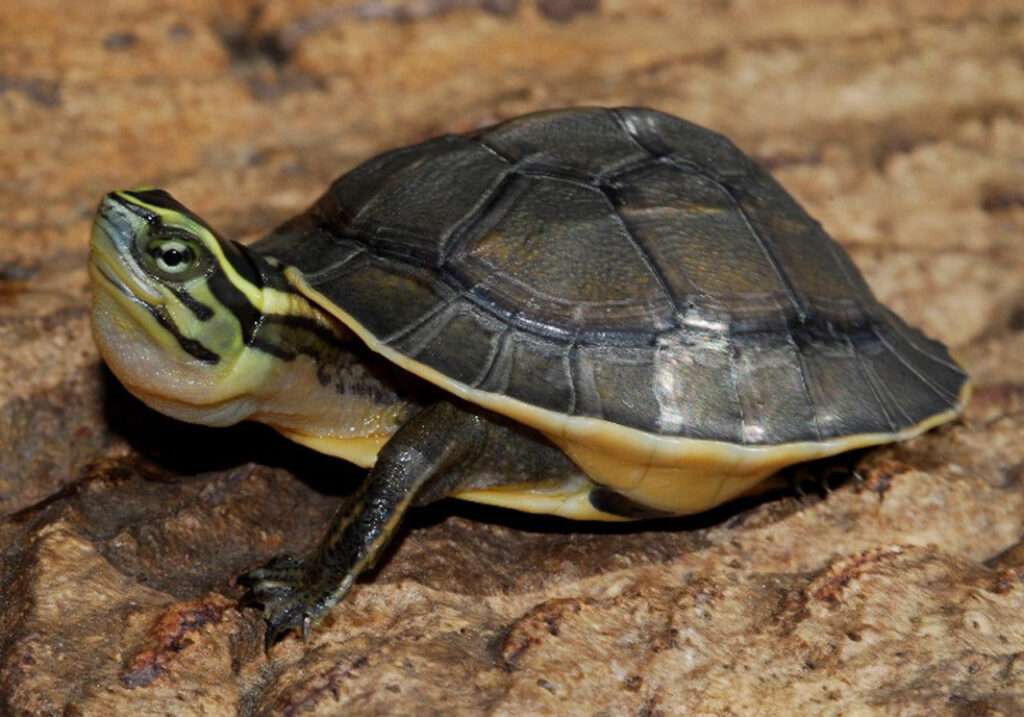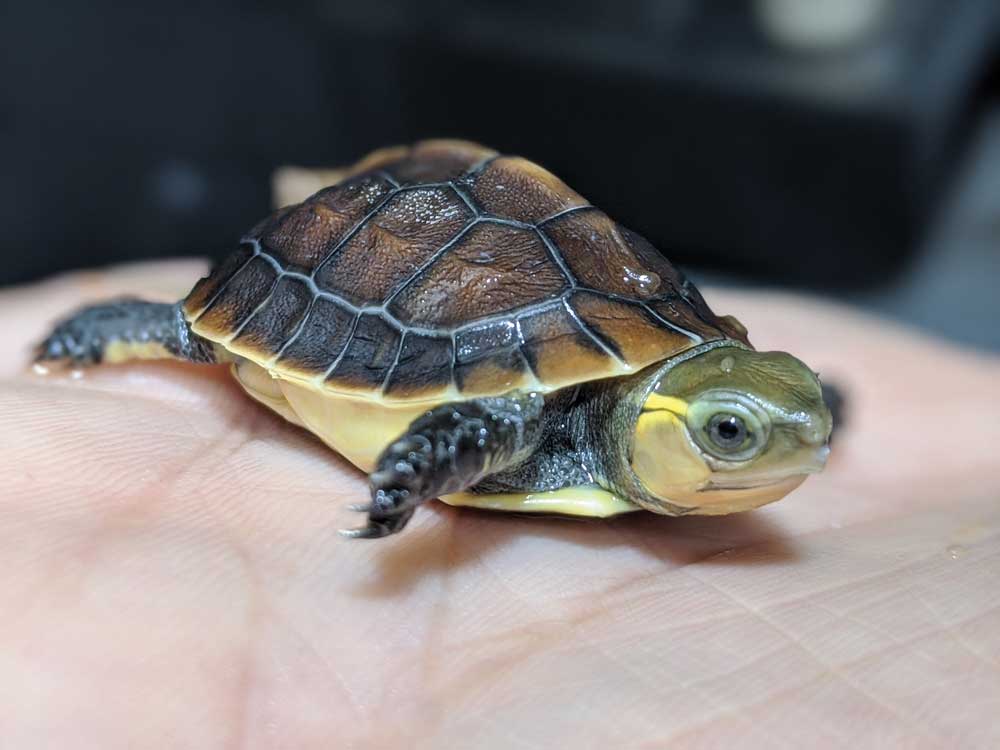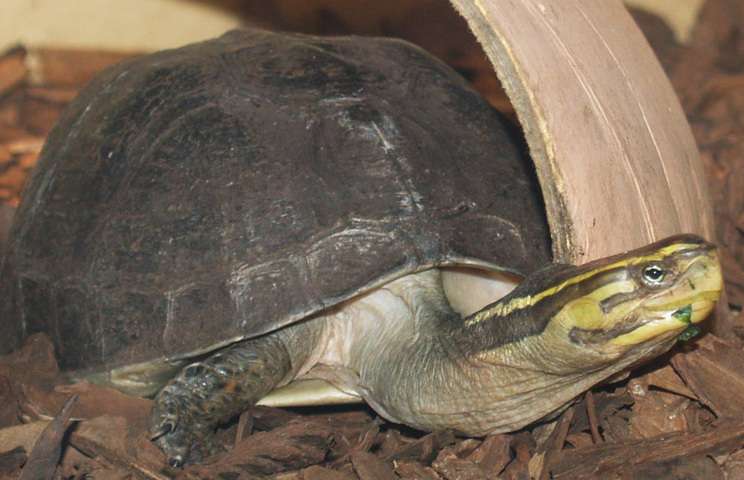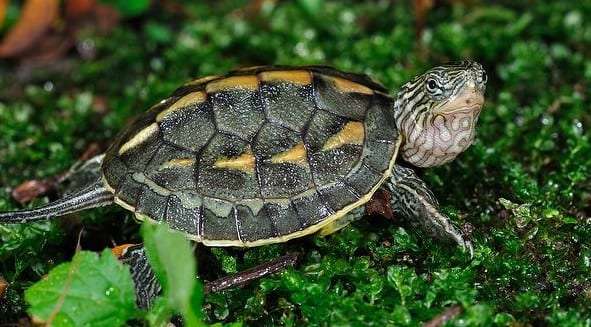
The endemic range of the golden thread turtle includes China, Laos, Taiwan, and Vietnam in Asia. This threatened species lives in low-altitude, slow-moving waters. They consume a variety of foods, while older turtles tend to consume more vegetation.
Golden Thread turtles have ivory plastrons and brown shells. Three ridges are present on their shells when they are young, but as they get older, two of these ridges vanish. Along their necks and shoulders, these turtles exhibit dark horizontal stripes.
Care as a Pet
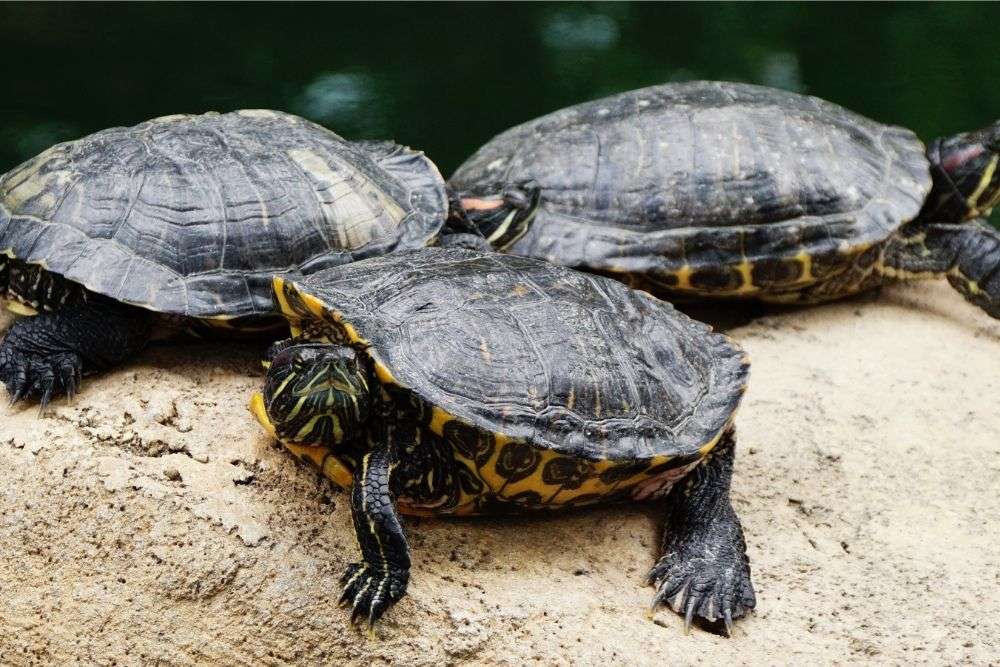
Housing
O. sinensis is a very low-demanding charge when kept in captivity. A secure, appropriately sized container; a solid basking platform that enables the turtle to emerge from water and dry completely; a good, full-spectrum light source; temperature control for the air and water inside the tank; and a wholesome diet are the bare minimum requirements to give them a safe, healthy environment.
Hatchlings can be kept in almost any container that has a minimum volume-to-size ratio of 10 gallons per inch of turtle and water depth that is at least 112 times the straight length of the turtle’s shell. Add 5 gallons per turtle inch to the total water volume for each new animal.
Heat
These turtles can tolerate a wide range of temperatures due to their wide native distribution. In general, healthy, active turtles should be produced in environments with water temperatures between 75 and 80 degrees Fahrenheit, air temperatures between 80 and 85 degrees, and basking temperatures between 85 and 90 degrees. To achieve the desired effects, a combination of spot lamps with UVB-producing mercury vapour bulbs and submersible titanium heaters can be used. The primary goal is to create a thermal gradient with the water being the coolest, the air being the middle temperature, and the basking location being the warmest.
Feed
O. sinensis is a real omnivore that will eat almost any edible plant or animal material. The turtles are believed to eat mostly vegetation in the wild, although they will also quickly eat carrion or any mammal that is slow enough to be captured.
Even newly hatched turtles typically accept commercial pellet food as their first meal, and captive turtles hardly ever refuse food. However, as with any turtle, give it a balanced diet that contains between 30 and 40 percent protein, lots of calcium and few phosphates, as well as a wide range of vitamins and minerals. You can also leave floating plants in the water for them to eat, such as romaine lettuce, water lettuce (also known as water hyacinth), and duckweed.



